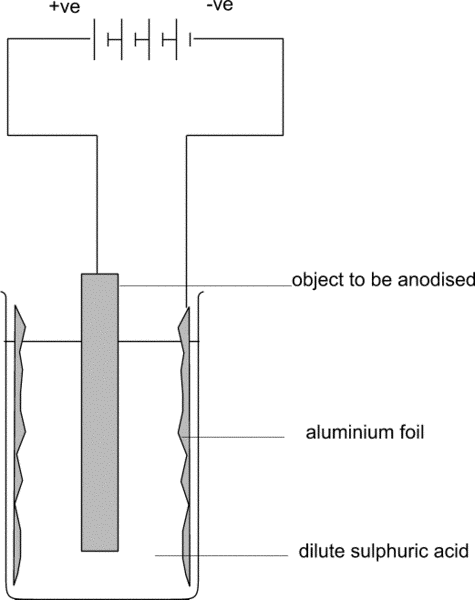
A Beginner’s Guide to Anodising
The process of anodising is used to produce thick oxide coatings for aluminium and alloys. It’s an electrolytic process producing an oxide layer 5 to 30µm thick, improving a surface’s resistance to corrosion and general wear. It can be used as decoration.
During electrolytic processes, the components are made an anode by using a dilute acid solution. The process of oxidation causes a coherent oxide film to form, adhering to the metal substrate underneath. Most anodising jobs are performed on aluminium or aluminium alloys or titanium and magnesium alloys.
Image Credit
Pre-Treatment
Prior to anodising, the surface must receive a pre-treatment, influencing the final look as well as properties of the coating. Many pre-treatments are available, including abrasive polishing and other mechanical processes and chemical treatments like brightening or polishing. Any drilling, welding or machining should be completed beforehand.
Electrolyte Solution
There are three types of solution most commonly applied during the process.
Firstly, a 10-15% sulphuric acid solution at a temperature of 25 degrees Celsius, with a coating formation rate of around 25µm per hour.
Another solution used contains both oxalic acid and sulphuric acid, with a faster coating formation rate at around 30µm in an hour.
And lastly, another solution is made up of 10% chromic acid, between 38 and 42 degrees Celsius, with the slower formation rate of around 15µm per hour.
All three of these solutions are transparent and porous, used alongside a decorative coating.
Hard Anodising
Surface engineering specialists such as https://www.poeton.co.uk/ will tell you that hard anodising is generally the most durable and cheapest coating available for aluminium alloys. It’s especially resistant to low-stress abrasion. It is commonly used with sliding systems or aluminium components which are subjected to great fluid (not impact) wear.
Hard anodising is the production of thicker oxide coatings (between 25 and 100µm) meaning they are firmer (between 500 and 900 HV) and can provide more wear resistance to alloys. It is possible to achieve this by applying a sulphuric and oxalic acid mixture at a lower temperature (0-10 degrees Celsius) and in high concentrations. This produces coatings of a grey or black colour with a non-porous property. This can’t be applied to all aluminium alloys, however – the 2xxx alloys and casting alloys do not respond well, whereas the 5xxx and 6xxx alloys series will.


Leave a reply